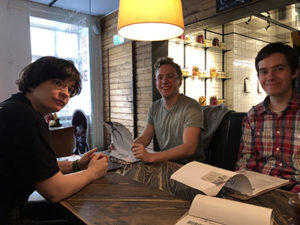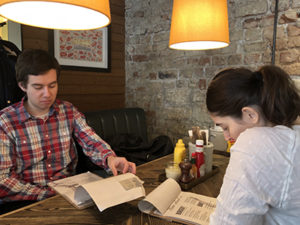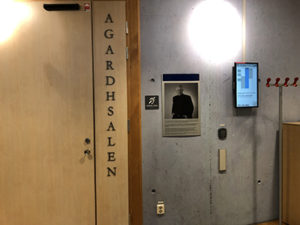 Two weeks ago, researchers from three institutions: Lund University Diabetes Centre (LUDC), Bergen Diabetes Groups and FIMM met in the spacious Agardh lecture hall of CRC, in Malmö, to attend a workshop titled “Extremism can be useful”. The workshop was organised by Ola Hansson, Valeriya Lyssenko and Johan Fernø, and was the second workshop to include research groups from these three organisations. Its objective was to explore the current and future directions of diabetes research and to foster potential new collaboration between the diabetes researchers within these nordic countries.
Two weeks ago, researchers from three institutions: Lund University Diabetes Centre (LUDC), Bergen Diabetes Groups and FIMM met in the spacious Agardh lecture hall of CRC, in Malmö, to attend a workshop titled “Extremism can be useful”. The workshop was organised by Ola Hansson, Valeriya Lyssenko and Johan Fernø, and was the second workshop to include research groups from these three organisations. Its objective was to explore the current and future directions of diabetes research and to foster potential new collaboration between the diabetes researchers within these nordic countries.
The meeting begun with a walk down memory lane guided by Leif Groop (LUDC, Lund University and FIMM), presenting past, current and future perspectives in medical diabetes research. After setting the stage with his inspired talk pointing to the discussion thematics for the next two days, we were introduced to the industry view. Allan Vaag from AstraZeneca (Sweden) came down to the stage and gave a 30-minutes passionated talk from his personal perspective, without any slide (!), about the industry need to relate to clinical outcomes. I was impressed by his ability to keep us entangled in his discourse, without any visual help. The simple explanation of his take was rather a convenience one: his slides need to be approved in a committee before a public presentation, thus, on this spot, he did not act as the representative of the company, but as an experienced industry expert. And, obviously, his strategy makes very good “free” speakers. (Note for myself: we should try it in our lab meetings, especially since we have new problems with our projectors). The needs and challenges in the clinical diabetes research were presented by Peter Nilsson from Lund University and SUS Malmö.
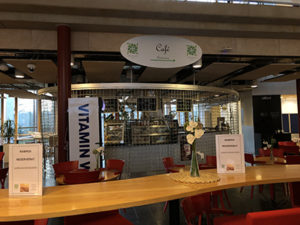 After coffee we immersed ourselves in extreme science: human knockouts studies. First, Mikko Lehtovirta (from FIMM, Finland), after a funny introduction of himself, which included some dogs, presented the zinc transporter gene variant as an example of recruitment by genotype. Next, Rashmi Prasad (from LUDC, Sweden) discussed about the extremes in temporal relationships, more precise about the parent-of-origin effects and the diabetes risk. Valeriya Lyssenko (K2, UiB) and Bjørn Olav Åsvold (from NTNU, Trondheim) talked about the genetic risk score and phenotypes using data from the HUNT Study (Nord-Trøndelag Health Study) and the national health registries for recall by genotype investigations.
After coffee we immersed ourselves in extreme science: human knockouts studies. First, Mikko Lehtovirta (from FIMM, Finland), after a funny introduction of himself, which included some dogs, presented the zinc transporter gene variant as an example of recruitment by genotype. Next, Rashmi Prasad (from LUDC, Sweden) discussed about the extremes in temporal relationships, more precise about the parent-of-origin effects and the diabetes risk. Valeriya Lyssenko (K2, UiB) and Bjørn Olav Åsvold (from NTNU, Trondheim) talked about the genetic risk score and phenotypes using data from the HUNT Study (Nord-Trøndelag Health Study) and the national health registries for recall by genotype investigations.
Claes Wollheim, senior advisor at LUDC (Sweden) and University of Geneva (Switzerland) discussed the role of the VDAC1 (ATP- conducting mitochondrial outer membrane voltage-dependent anion channel-1) in insulin-producing beta-cell glucotoxicity preceding diabetes. VDAC1 upregulation leads to ATP depletion and impaired insulin secretion. VDAC1 inhibitors, which includes metformin, restored insulin secretion in T2D islet donors, and might be used in the prevention of T2D. These results were recently published in Cell Metabolism (2019).
The afternoon was dedicated to research at cellular level, with Simona Chera (Bergen) discussing about extreme islet cell plasticity, and factors involved in the differentiation and trans-differentiation towards insulin-producing cells; while Nils Wierup (LUDC) presented sequencing analyses at the single-cell level.
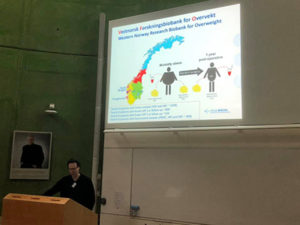 The Keynote lecture was given by Kay Prüfer from Max-Planck Institute for the Science of Human History Jena (Germany) describing the history of humans through evolutionary analysis of genome data. Interestingly, the archaeogenetics includes a lot of detective work in order to identify the source of the genomic data, before analysing with a high-coverage of our closest extinct relatives, Neandertals and Denisovans genomes. You can read more about the genome of ‘Denisova 11’, a bone fragment from Denisova Cave (Russia) which comes from an individual who had a Neanderthal mother and a Denisovan father, here: Slon et al., Nature, 2018.
The Keynote lecture was given by Kay Prüfer from Max-Planck Institute for the Science of Human History Jena (Germany) describing the history of humans through evolutionary analysis of genome data. Interestingly, the archaeogenetics includes a lot of detective work in order to identify the source of the genomic data, before analysing with a high-coverage of our closest extinct relatives, Neandertals and Denisovans genomes. You can read more about the genome of ‘Denisova 11’, a bone fragment from Denisova Cave (Russia) which comes from an individual who had a Neanderthal mother and a Denisovan father, here: Slon et al., Nature, 2018.
The first day ended with 3 lectures on muscle (Ola Hansson, LUDC), obesity (Johan Fernø, Bergen) and diets (Simon Dankel, Bergen).
But, before dinner we had some more work to do! We had to apply our teamwork skills for team-building puzzle solving session. The 2-hours session came and went really fast, but my team came last. Well, that was our first meeting with the antigen, challenged accepted for next time! The puzzles and RL quests animated the discussions at dinner for another 90 minutes. Coming back to the hotel, close to midnight, I realised: I have one more slide to add in my presentation!
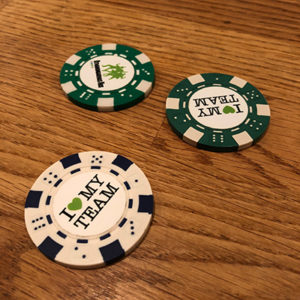
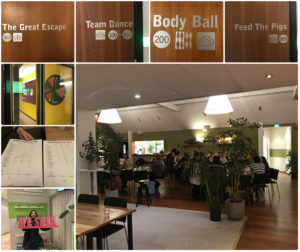
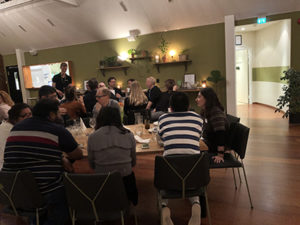

Second day started (early) with novel diabetes subtypes described by Dina Mansour Aly (LUDC). Next, we had a demonstration of a very useful tool to be used by caregivers and researchers on diabetes classification. Of course, the tool is still in work, although the demo made by Olof Asplund (LUDC) was quite impressive, thus captivated the attention of all people present, and sparked a vivid discussion on use and add-ons.
The “exocrine” session was presented by Karianne Fjeld (Bergen) discussing about CEL, an extremely polymorphic gene involved in pancreatic disease; and Yang De Marinis (LUDC) describing the metabolic memory.
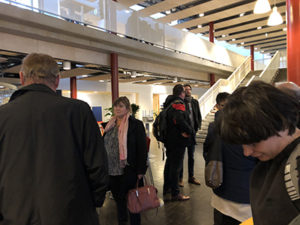 Stefan Johansson (Bergen) discussed about the genetics of BMI in infancy and early childhood, presenting the first genome-wide association study of BMI measurements at 12 time points from birth to eight years of age, including over 14000 children from the Norwegian Mother and Child Cohort Study (MoBa). Interestingly, they identified a novel transient effect in the leptin receptor (LEPR) locus, having no effect at birth, however showing an increase effect on BMI in infancy, peaking at 6-12 months, and dropping to little effect after age five. A similar transient effect was found for the leptin gene (LEP), peaking at 18 months of age. These results suggest interesting new roles of the leptin signalling pathway acting in infant growth.
Stefan Johansson (Bergen) discussed about the genetics of BMI in infancy and early childhood, presenting the first genome-wide association study of BMI measurements at 12 time points from birth to eight years of age, including over 14000 children from the Norwegian Mother and Child Cohort Study (MoBa). Interestingly, they identified a novel transient effect in the leptin receptor (LEPR) locus, having no effect at birth, however showing an increase effect on BMI in infancy, peaking at 6-12 months, and dropping to little effect after age five. A similar transient effect was found for the leptin gene (LEP), peaking at 18 months of age. These results suggest interesting new roles of the leptin signalling pathway acting in infant growth.
My presentation on potential use of iPSC-derived insulin-producing cells in the clinic, and yet, more realistic role in disease modelling, ended the last day of the meeting.
The organisers thanked to all the participants and promised a mountain full of snow as a location for the next Nordic Diabetes Meeting: Geilo

Just before coming back home, Simona, Thomas, Andreas and I had a great lunch together and a stroll through Copenhagen.
